|
CLICK BUTTON TO GO TO SECTION |
|
PART 1 T O P I C |
|
|
|
|
|
|
|
|
|
|
|
|
|
|
|
|
|
|
JewishWikipedia.info
THE CARIBBEAN -
THE JEWS OF TRINIDAD AND TOBAGO _______________________________________
HISTORY
Wikipedia
Trinidad and Tobago officially the Republic of Trinidad and Tobago, is a twin island country situated off the northern edge of South America mainland, lying 11 kilometres (6.8 miles) just off the coast of northeastern Venezuela and 130 kilometres (81 miles) south of Grenada. Bordering the Caribbean to the north, it shares maritime boundaries with other nations including Barbados to the northeast, Grenada to the northwest, Guyana to the southeast, and Venezuela to the south and west. Trinidad and Tobago lies outside of the hurricane belt.
The island of Trinidad was a Spanish colony from the arrival of Christopher Columbus in 1498 to the capitulation of the Spanish Governor, Don José Maria Chacón, on the arrival of a British fleet of 18 warships on 18 February 1797. During the same period, the island of Tobago changed hands among Spanish, British, French, Dutch and Courlander colonizers, more times than any other island in the Caribbean. Trinidad and Tobago (remaining separate until 1889) were ceded to Britain in 1802 under the Treaty of Amiens. The country Trinidad and Tobago obtained independence in 1962, becoming a republic in 1976.
Trinidad and Tobago is the third richest country by GDP (PPP) per capita in the Americas after the United States and Canada. Furthermore, it is recognised as a high income economy by the World Bank. Unlike most of the English-speaking Caribbean, the country's economy is primarily industrial, with an emphasis on petroleum and petrochemicals. The country's wealth attributes to its large reserves and exploitation of oil and natural gas. Trinidad and Tobago is the leading Caribbean producer of oil and gas.
Trinidad and Tobago is known for its Carnival and is the birthplace of steelpan, limbo, and the music styles of calypso, soca, Parang and chutney.
JEWISH TRINIDAD & TOBAGO
Times of Israel, Nicholas Jagdeo, December 8, 2013,
Trinidad & Tobago is one of the most culturally, ethnically and religiously diverse societies in the world. With an almost equal helping of East Indian-descended and African-descended racial majorities, one also finds enormous minorities in people of Chinese, European, Lebanese, Syrian, Amerindian and mixed-race descents. Further compounding this ethnic hullabaloo, a hodge-podge mix of religions adds another spicy dimension to the pot. Catholics, Protestants of every conceivable colour, Hindus, Ba’hais, Muslims, Rastafarians, Ethiopian Orthodox, Shango Baptists, Buddhists, atheists, Jews and everything else you can imagine all call these wonderful islands home. And despite all the very many differences which mark the varied and coloured people of this country, ethnic and religious divisions do not exist. Rather, the different cultures, religions and races coalesce to form an easy Carnival culture, reflected in the unique spirit of the Trinidad & Tobago people.
The story of these two islands is a remarkable one of cultural, ethnic and religious cohesion, respect and tolerance. The government has proclaimed almost every imaginable religious festival a national holiday, and thus, citizens of this twin island republic are given a day off to enjoy their own holy days and reflect on the holy days of others. In this Christian-majority country, the Muslim holiday of Eid-Ul-Fitr and the Hindu festival of Divali are given equal prominence as Christmas and Easter. The Afro-Christian syncretic Shango Baptist religion (unique to Trinidad & Tobago, and similar to the voodoo rites of Jamaica and the southern states in the USA) was given its own national-religious holiday, Spiritual Baptist Liberation Day, to commemorate the persecution and struggles they endured under British rule as they agitated for freedom to worship and official recognition, which they eventually gained under local rule. In addition to all of these fascinating religious holidays, Trinidad & Tobago celebrates the national holiday of Indian Arrival Day, to mark the coming of East Indians to the country. Also, Trinidad & Tobago was the first country in the world to recognise the importance of the abolition of African slavery in 1834, and the remembrance of this wonderful moment in human history was officially enshrined into the national concsiousness with an annual celebration of Emancipation Day.
Racial and religious divisions are wonderfully absent in this oil- and gas-producing Caribbean nation. The country has an official and unofficial policy of acceptance, tolerance and respect, as reflected in the words of it’s national anthem: “Here every creed and race find an equal place”. Each culture which reached the shores of this young country was embraced – finding it’s rightful equal place – and each added an essential ingredient to the recipe that was to become its unique, cosmopolitan culture. With a country so at peace with its difference that it celebrates its diversity at every opportunity, it’s no wonder the small Jewish community in Trinidad & Tobago goes by unnoticed by its non-Jewish fellow-citizens and by world Jewry at large.
Trinidad & Tobago Jewry comprises roughly fifty to sixty persons of various Jewish backgrounds. Though tiny, the community is a microcosm of world Jewry. Within the minuscule numbers one finds Israelis, Sephardi, Mizrachi, Ashkenazi, Turkish, Conservadox, secular, traditional, atheist, humanist, ambivalent Jews, and converts to every major stream of Judaism. In addition to this, the community welcomes the Trinidad & Tobago descendants of crypto-Jews who are aware of their Jewish heritage and want to know more about the religion of their forefathers. I even lunched once, in 2010, with a Karaite Jew who had come to Trinidad & Tobago on business and had so enjoyed his stay here that he said outright that he could see himself retiring to Tobago with his wife in a few years, and thus become another diverse thread in the colourful fabric which constitutes Trinidad & Tobago Jewry.
The community boasts many achievements, with Jews contributing to almost every sphere of public life in the country: in media, one of the most well-known and respectable news anchors is Jewish; in fashion and the Carnival arts, one of the most popular fashion and Carnival costume designers is a Moroccan-Jewish Israeli expat who has lived in Trinidad since she married a Chinese-Trinidadian at the age of twenty-one; in music, one of the pioneers of calypso, Lionel Belasco, the son of a Sephardi-Jewish man; in literature, Afred Mendes, the descendant of Portuguese Jews, and grandfather of world-renowned director, Sam Mendes; in the culinary arts, one of the most popular food bloggers and chefs in the country is Jewish and has a kosher Caribbean website, customising local recipes in accordance with kashrut; in public service, a Curaçaoan Jew serving in the country’s highest court, the Caribbean Court of Justice; in the business sector, several of the country’s oldest business enterprises have been founded by Portuguese-Sephardi Jews in the 1800’s (Y. de Lima & Co., Miguel Moses), and many businesses were established in the early half of the 20th century by European Jewish immigrants (Stecher’s Fine Gift Stores, Yufe’s, Diana Candy).
Though the Jewish community accounts for only roughly 0.005% of the total population, the community has impacted the country in many overt and subtle ways. The insignia of the police force is the Magen David, topped with a tiny hummingbird in the upper-right corner to add a local flair; outside of Israel, Trinidad & Tobago is the only country in the world to make use of this enduring Jewish symbol. A Jewish real estate development in the suburb of Diego Martin from the post World War 2 era honours the names of the great stalwarts modern Jewish history: Golda Meir Gardens, President Weizmann Avenue, David ben Gurion Avenue and Yitzchak ben Zvi Avuenue are some of the more colourful names which remain as a testament to the Jewish presence on the islands. The world-famous Angostura company, which produces Angostura bitters and the Angostura range of rums and is one of two non-British companies to hold a Royal Warrant to the Queen, was founded by the German-Jewish Siegert family and continues to operate from Trinidad & Tobago. The Stollmeyer’s Castle – modelled on Balmoral Castle, and built in 1904 by the Trinidadian-British-Jewish Stollmeyer family – is one of the Magnificent Seven mansions which line the Queen’s Park Savannah in Port-of-Spain, and remains a national monument. The Bet Olam section of the Mucurapo Cemetery continues to function as the community’s modern working cemetery with gravestones which mark the very Jewish names of Cohen, Schwartz and Katz; gravestones which indicate birthplaces and persecuted lives in exotic countries which no longer exist – Belorussia, Prussia and Anhalt – and eventual peace and rest on the tranquil shores of this distant Caribbean island. Directly opposite to the cemetery is a parcel of land which, in the 1970’s, had been bid upon by the local Jewish community as the possible site to build a permanent synagogue (ironically, the Jewish community lost their bid, and, instead, the land was sold to the Jamaat al-Muslimeen – a terrorist organisation which later, in the 1990’s, stormed the Trinidad & Tobago Parliament, shot the Prime Minister and overthrew the government for three days until they surrendered to the Army). On May 15th, 1948, the day after the State of Israel had been declared, Trinidad & Tobago Jewry – which was at its zenith, consisting of approximately five thousand souls – took to the streets of Trinidad & Tobago’s capital city, Port-of-Spain in a joyful march, with the Israeli flag being waved by the jubilant masses and loud, powerful renditions of Hatikvah being sung with glee. The community’s greatest achievement happened twice when it worked towards and witnessed the official visits of two Trinidad & Tobago Prime Ministers to Israel: first, when Prime Minister Dr Eric Williams travelled to Israel and met with Prime Minister David ben Gurion in the 1950’s, and later, in 2005, when Prime Minister Patrick Manning travelled to Israel and met with Prime Minister Ariel Sharon (the last meeting the Israeli Prime Minister was to have with a visiting head of government before his untimely coma).
Tiny community? Undoubtedly. Dynamic, diverse community? Undeniably. The very smallness of the community has forced it to be all-inclusive and unaffiliated, thus remaining open to all streams of recognised Jewish thought. Divisions between secular and religious, Reform and Orthodox, Ashkenazi and Sephardi, which are painfully prevalent throughout world Jewry, are notably absent in the Trinidad & Tobago community. It is precisely the smallness of the community which leads to it’s all-inclusive, unaffiliated nature. The community remains undivided, and the organisation which represents the community – “Echad: the Jewish community of Trinidad & Tobago” – carefully chose its name to reflect the unity of the local community. The local culture of tolerance and respect is applied liberally to the Jewish community: inclusively united in its Jewishness, despite differing opinions as to what individual and collective Jewishness entails.
At present, there is no synagogue, no mikveh and no rabbi to serve the community, but celebration of the major holidays is religiously marked, and hosted in the homes of local Jews, with many different formal and informal events happening throughout the year. Although there is no Chabad house, Chabad performs outreach to Trinidad & Tobago every summer, with missionary rabbis visiting to pastor and assist. For the rest of the year, rabbis in the more established Caribbean-Jewish communities in Jamaica and the Dutch Antilles are always ready to lend a helping hand, and many of the local community are in communion with congregations in the United States. As Trinidad & Tobago is the most economically and financially advanced English-speaking Caribbean country, due to its oil, gas, energy and chemical industries, at any given time there is bound to be any number of expatriate Jews from Israel, the United States, Canada, the United Kingdom and various other countries working on the islands, and these visiting Jews swell the numbers of the local community considerably.
At the same time, the advantages which come with being a small community give rise to the very probable future where Judaism will cease to exist on the islands. The challenges of continuing to exist as a community without the unifying edifices of a synagogue, a mikveh or a rabbi are, arguably, surmountable in the short-term. Monies can be raised to rectify any of these glaringly absent centrepieces of Jewish life. The true existential threat to the community lies in its smallness and, thus, unsustainable numbers. True, Jews tend to be pessimistic when it comes to predictions of sustainable numbers and the future, but the fact remains: in Trinidad & Tobago, the average Jew is sixty years old, and pessimistic or not, this is not a very encouraging statistic. The younger resident Trinidad & Tobago Jewish population currently accounts for only five to ten persons – numbers which definitely cannot sustain a continued Jewish presence on the islands. A good American-Jewish friend of mine from Trinity College, Rachel Golden, who spent a year abroad at the local university and did her research thesis on the Trinidad & Tobago Jewish community, came to the following conclusion: “The Jewish community in Trinidad is in danger of disappearing all together. There is no new blood except for the occasional visitor such as myself; but I don’t have permanent ties to Trinidad, and my future children will not be raised here”. However, Trinidad & Tobago’s Jewish story is one of persistence; it has always replenished itself from different sources. Despite the damning statistics and the odds stacked against it, there is no doubt that Trinidad & Tobago Jewry will continue – albeit, in small numbers – but continue nonetheless. To understand why such a conclusion can be so confidently stated, one must first understand the history of Judaism in Trinidad & Tobago.
HISTORY
Jews reached the shores of Trinidad & Tobago in several distinct (almost imperceptible to the greater society around them) waves since Christopher Columbus discovered these most southerly of the Caribbean islands, on his third voyage from Europe in 1498. The first major wave of immigration came in 1783 with the Cedula of Population, when Trinidad – as a vastly underpopulated Spanish colony – opened it’s borders to European Catholics, targeting, specifically, the French planter class. Almost immediately the white population swelled, from 1,000 persons in 1773 to over 18,000 by 1797, when the island came under British rule. With the opening up of the Trinidad’s borders, the French planters were given a haven, and immediately formed the white majority on the island. Under Spanish, and then, British rule, the French planter class ensured that the island operated as, for all intents and purposes, a French cultural outpost, and French and patois remained the lingua franca of the island well into the mid-1800’s. It is speculated that a sizeable minority of these French Catholics were actually crypto-Jews who had converted to Catholicism in previous centuries, and were interested in coming to Trinidad primarily because they would be free from church influence to live as they pleased. Jewish surnames such as Barcant, Mainz, Meyer and Yakar cropped up among the French planters. Sources indicate that those who were descendants of Jews continued to practice their Jewish traditions, despite their Catholic exteriors: their graves faced east; they named their sons on the eighth day in their homes; church attendance was the lowest in Trinidad than in all other colonies in the West Indies; and they married exclusively amongst themselves, shunning the Spaniards and, later, English, who lived alongside them. Eventually, the crypto-Jewish French planters assimilated assimilated into the Catholic culture which surrounded them, and their Judaic practices were lost over time.
In 1838, when slavery was abolished, the British brought in indentured labourers to take the place of the newly freed Afro-Trinidadians who refused to continue working the plantations. Chief among these new worker immigrants was a large number of East Indians, but, attempts were also made to secure labor from China, Lebanon, Syria and Portugal, mostly from the Portuguese island of Madeira. The Portuguese immigrants were undoubtedly direct descendants of Jews who were forcibly converted to Catholicism in 1492. Many of the Portuguese-Trinidadians remained in Trinidad & Tobago when their two-year indentureship contracts came to an end. They formed a decisive minority within the Creole population and experienced no real tensions with their European fellows, but unlike their European counterparts, they were considered non-white by the society and, ascribed equally to Catholicism and Presbyterianism. Despite their staunch commitment to Christianity, the Portuguese immigrants were largely aware of their Jewish roots and established strong links with the tiny community of Sephardi-Dutch Jews which existed in the island at the time, and, indeed, there was intermarriage between these two groups. Jewish surnames which reflect the Portuguese-Jewish heritage continue to exist in the Trinidad & Tobago population, names like: de Caires, de Silva, de Souza, Arbanel, Guzman and Ferreira. Modern descendants of these Portuguese-Jews are generally aware of their Jewish heritage, but continue to adhere to Christianity.
The most major wave of Jewish immigration occurred during and immediately following World War 2, when European Jews, fleeing the horrors of the Nazis, entered the islands. Many of them held German and Austrian passports, and as a consequence of the war, were termed enemies and were held in internment camps in Port-of-Spain for the duration of the war. When World War 2 ended, many left the camps and exited Trinidad & Tobago as a whole, but many more decided to settle here, which resulted in the largest, organised Jewish community Trinidad & Tobago had ever been blessed with. There were Jewish youth clubs, a Jewish drama club with productions being staged in Yiddish, Hebrew classes, Zionist clubs, and an official synagogue in a rented building on Duke Street, Port-of-Spain. Jews spread throughout the island, with strong presences in both the national capital and in the industrial capital in San Fernando. At this point, estimates indicate that the Jewish presence numbered approximately 3,000 people throughout the islands. Jews made contacts with the other ethnicities on the island, particularly the Lebanese-Christian and Syrian-Christian first- and second-generation refugees on the island, who had come to Trinidad & Tobago to establish better lives. These new Trinidad & Tobago Jews embraced their new homeland, and organised themselves into a society affectionately called the “Calypso Shtetl“. It was a golden era of Jewry on the islands, spanning thirty years, until 1970, with the rise of the Black Power Movement. The Black Power Movement sought to establish equal rights for the non-white majorities in the country by forcing socio-economic-political change, and was, in itself, a necessary step in the eventual racial peace enjoyed in the country today. However, Jews – who were identified as white – were not ready for the riots and rampage, after just recently having escaped Nazi atrocities, so rather than risk being present for a possible civil war (which never came), they fled en masse from the islands. The Torah scroll they had purchased was exiled to Barbados, and the era of the Calypso Shtetl came to an abrupt end. By 1970, the Jewish community numbered less than 100 persons.
Despite this mass exodus in the 1970’s, Judaism hobbled on in Trinidad & Tobago for the next three decades, bringing us to the present – where the numbers are at a record low. Yet, there is a confidence in the community which has led to a sort of renaissance, indicating that the community remains virile and will continue to press on. Why is this so? Without a rabbi, without a synagogue, without a mikveh to rally around; when demographics indicate that Trinidad & Tobago’s Jews’ numbers are unsustainable – how is it possible to confidently declare that Judaism will continue to exist in Trinidad & Tobago?
Unlike previous decades, the internet brings the community together and connected to the outside Jewish world in an unprecedented way, never seen before. Trinidadian & Tobago Jews and their descendants who have migrated from the country are now connected to the community they left behind and each other. In the early 2000’s, a reunion of the Calypso Shtetl took place in Toronto, with members flying in from the United States, Israel, Australia and Trinidad & Tobago. Trinidad & Tobago Jews who establish lives in other countries remain connected to the islands to varying degrees. The Calypso Shtetl lives on virtually.
In addition to this, a large number of expatriate non-Jewish Trinidadians and Tobagonians are meeting and marrying Jews, and, in many instances, these Trinidadians and Tobagonians are converting to Judaism. While many of these hybrid Trinidadian and Tobagonian/Jewish families live and work outside of the islands, they remain – unlike the Calypso Shtetl – genetically anchored to Trinidad & Tobago. Whether this new generation would eventually return to Trinidad & Tobago and revitalise the community with their sheer numbers is yet to be seen, but the fact remains, they constitute a large demographic which cannot be ignored. At present, Echad has made contact with twenty of these families – numbers which far outstrip the resident Trinidad & Tobago Jewish community – and, the discovery of more and more of them are happening more frequently.
In an odd way, Judaism has seemingly always had the odds stacked against it in Trinidad & Tobago. While Jews flourished in almost every other Caribbean island (Jamaica, Curacao, Aruba, Puerto Rico, the Dominican Republic and Cuba), they never managed to properly set down roots here. Yet, as the history of Jews in Trinidad & Tobago shows – despite the failures of the past, Jews still, inevitably, settle in Trinidad & Tobago. As the economic, industrial and financial powerhouse of the English-speaking Caribbean, Trinidad & Tobago remains a powerful magnet for foreigners, and, in particular, foreign Jews. Expatriate Jews living in Trinidad & Tobago find their way into the local community, bolstering numbers and becoming unofficial “Trini Jews”. While the vast majority of these visiting Jews will return to their original home-countries, their presence adds to the dynamism of the community.
The Jewish community of Trinidad & Tobago remains tiny, but the hope for a bigger and more dynamic future remains solid. Trinidad & Tobago has given to the various Jews who have settled on it’s shores, and the Jews have returned the favour to their Caribbean homeland in abundance. As a small community, Trinidad & Tobago Jewry remains committed to the Jewish mission and would like the rest of the world to know: we’re here – don’t overlook us, and don’t forget us.
HOW THE POLICE GOT THE STAR OF DAVID
By Dionne Jarrette, Express, Section 2, December 1, 1999, Pages 6 & 7
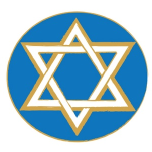
There is no synagogue in Trinidad, and you can count the number of Jews here on one hand, but their influence, and the marks they have left behind, reminds us that they once had a bigger presence here.
One of the foremost marks of the Jewish presence is the Magen David (pronounced mah‐gain dah‐veed), or the six‐point Star of David. This symbol adorns the local Police jeeps, flag, hats and buttons on the blue and grey uniform. In its centre is the copper rumped Hummingbird.
The explanation as to how the star got there will take most historians back to the 1930s. During this time, we were still a British colony, and as such our Police Commissioners were sent here by Britain. One of these men was Colonel Arthur Stephen Mavrogordato. Mavrogordato was stationed in Palestine in the Middle East, and he was transferred from there to the post of Commanding Officer of the Trinidad Constabulary. Mavrogordato was not himself Jewish, but he was believed to be the one who suggested the Magen David be used as the police emblem, a symbol he had known from the Palestine flag. He reversed the colours of the Palestinian flag; by this he put a white star on a blue background instead of a blue star on a white background. No one is sure why.
Some attribute the use of the Magen David to the fact that the 1930s was the time when it was becoming widely known and its shape was found to be fascinating. Others believed it was a talisman that brought good luck and this was why it was chosen.
The debate surrounding its origin was another reason for fascination, as scholars maintain that the star was not of Jewish origin, but taken from the Twi‐San, a people of south, central and east Africa. The Twi‐San dates back 30,000 years before the Christian era, and they were known to traverse the banks of the River Nile. To them, the symbol was known as the Pole Star.
The use of the Magen David as the police emblem makes the Trinidad and Tobago Police Force unique in that it is the only police service in the world that does not use its country's Coat of Arms as its official symbol.
The star was originally encased in a wreath with a crown atop it, to signify that Trinidad was a British colony. When Trinidad became a republic in 1976, these symbols of the former monarchy were replaced with the Hummingbird at the emblem's centre and with the shield from the Coat of Arms at the top where the crown once sat.
LINKS
Jews in Trinidad by Alice & Gerard Besson
The Failure of the Jewish Settlement in the Island of Tobago sefarad.org
The Portuguese of Trinidad and Tobago - Locating an important minority, Dr Jo-Anne Ferreira
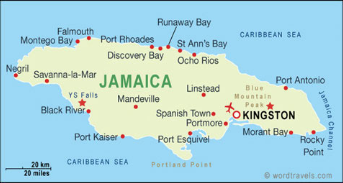
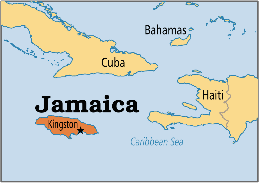
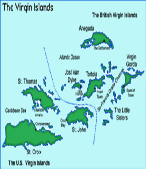
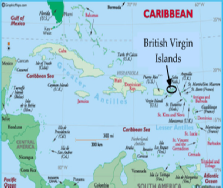
THE
INCREDIBLE
STORY OF THE JEWISH PEOPLE
